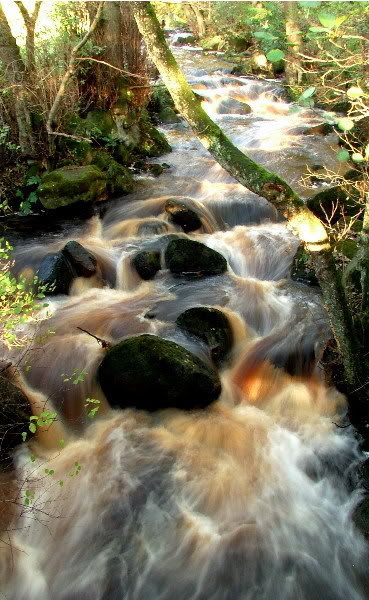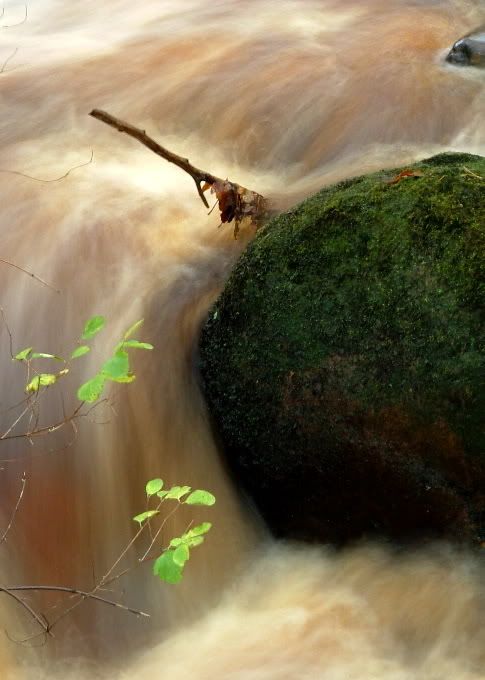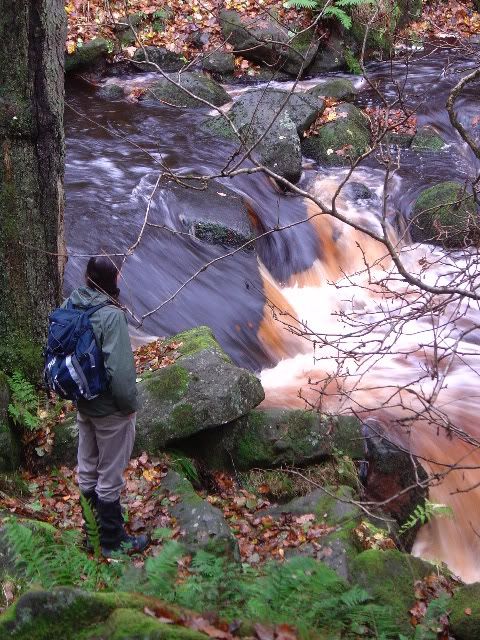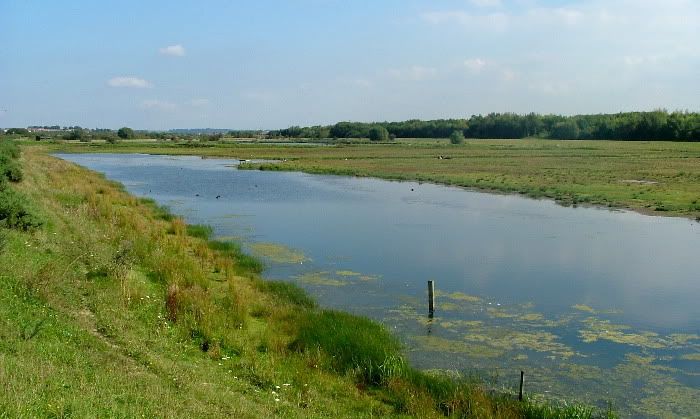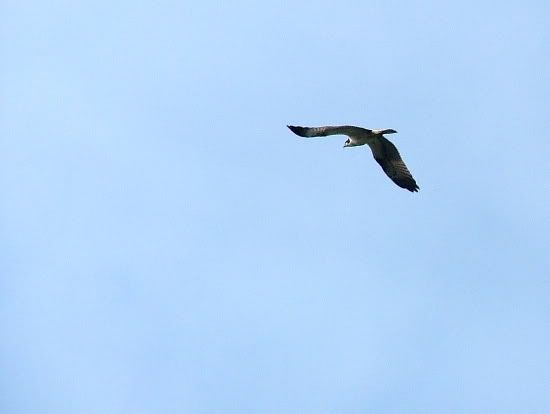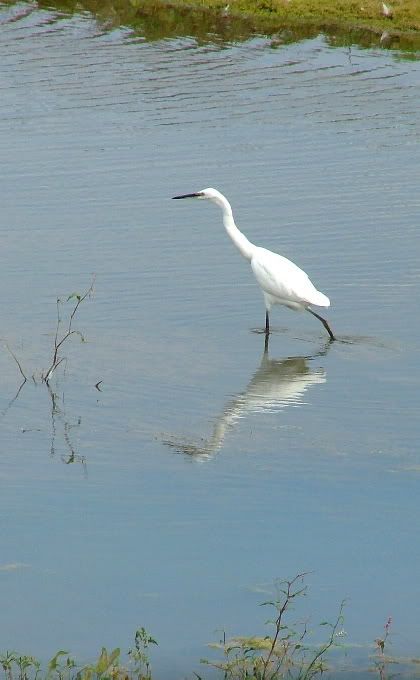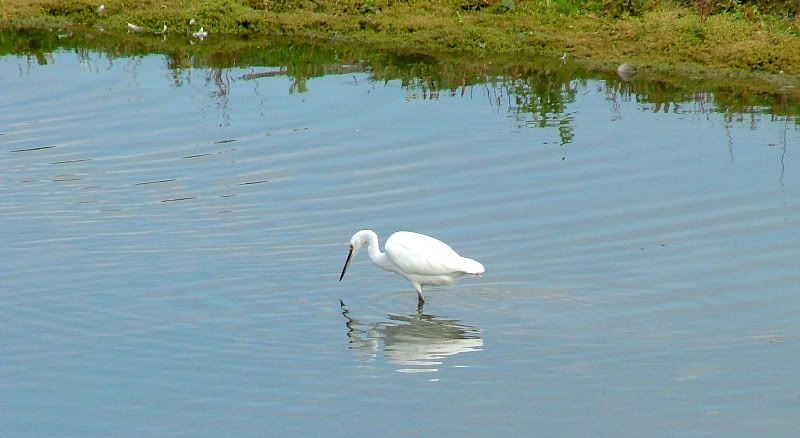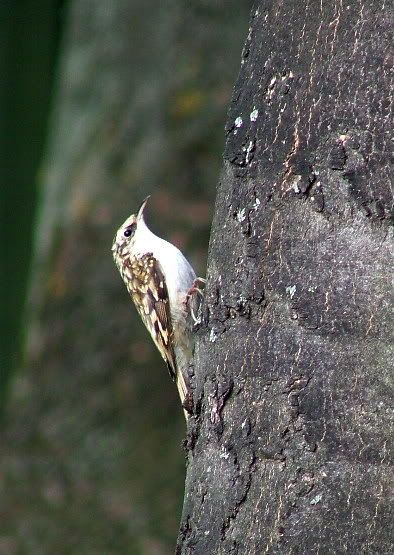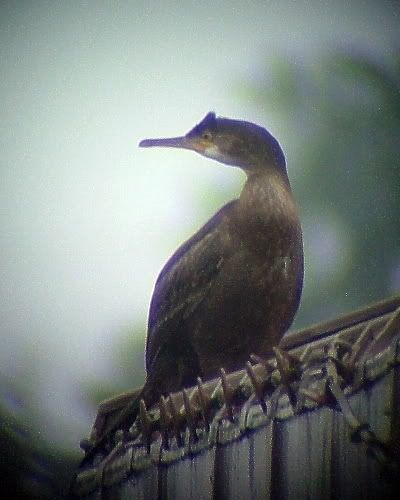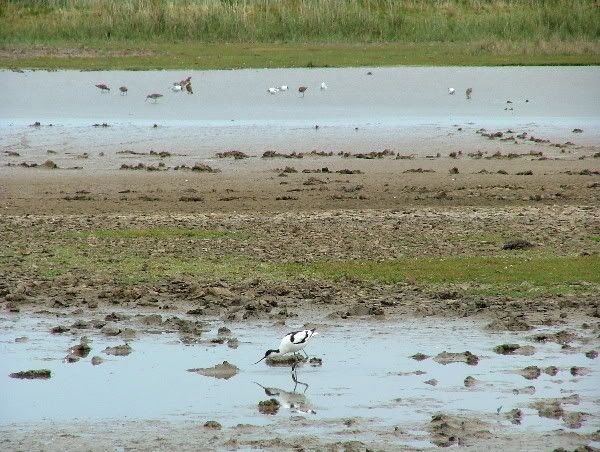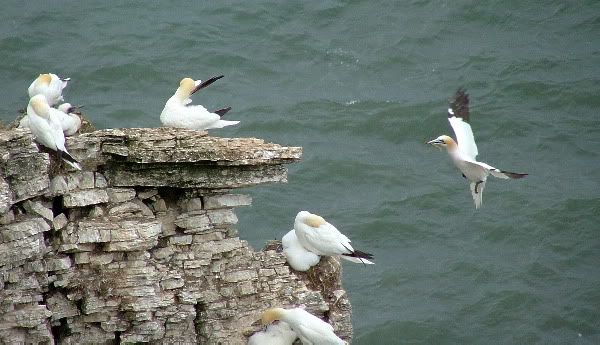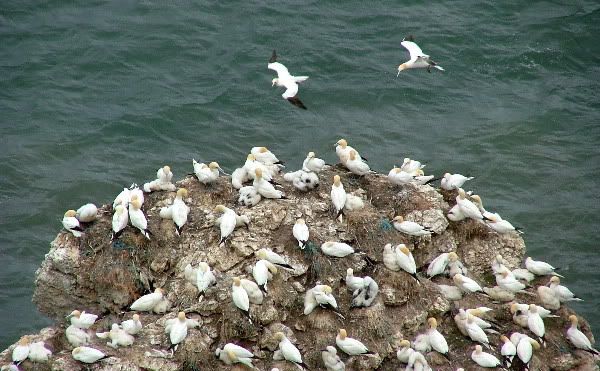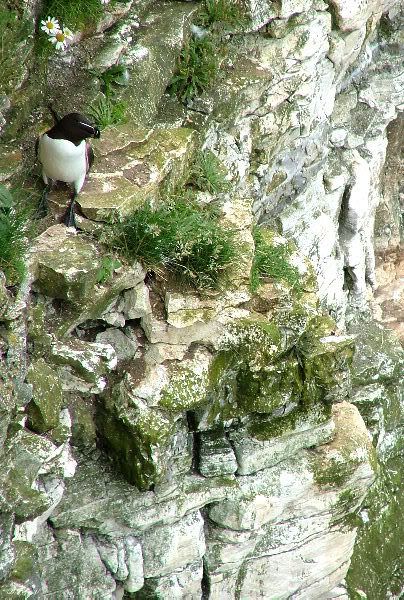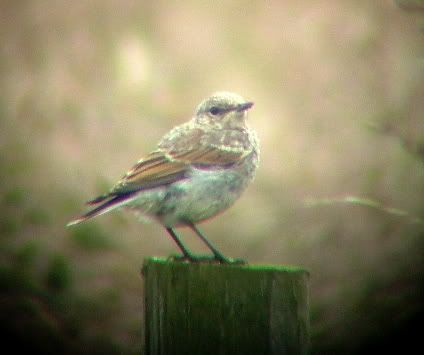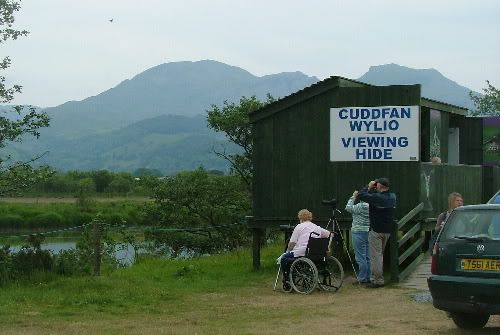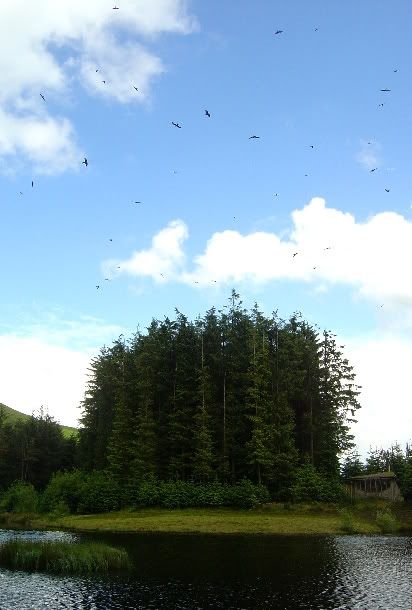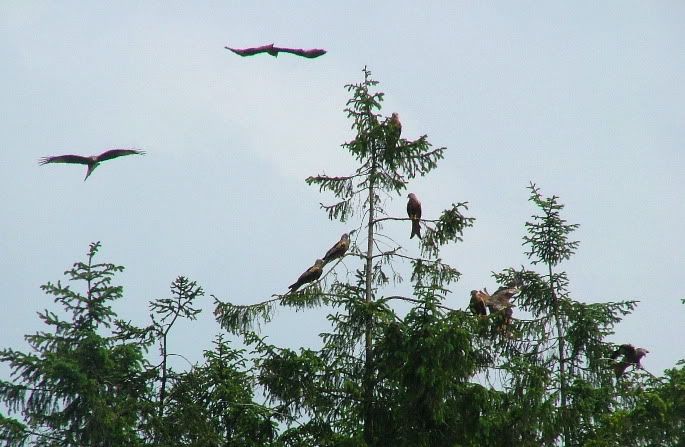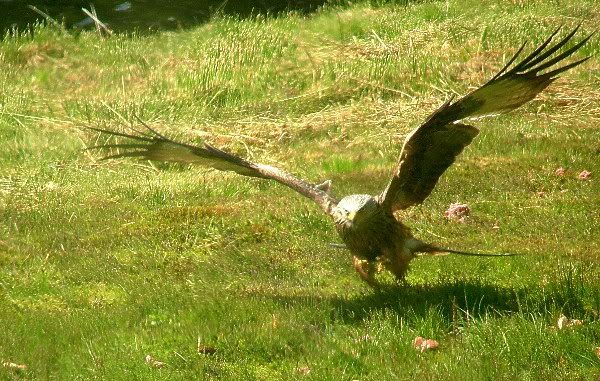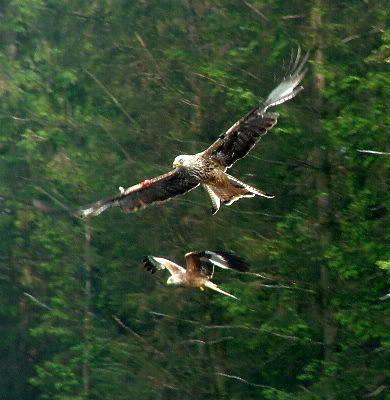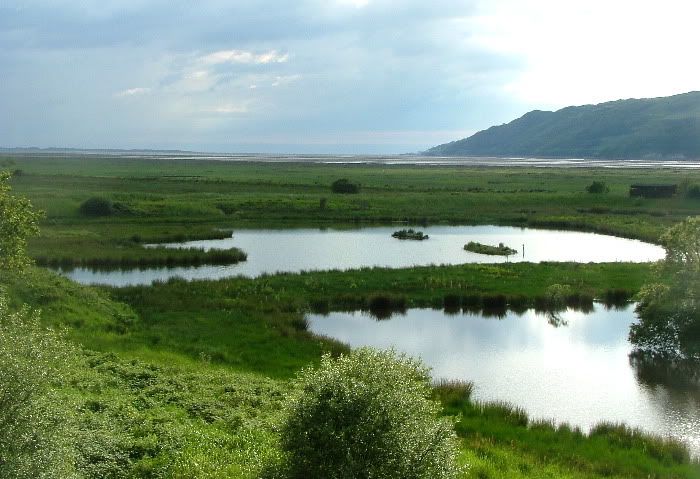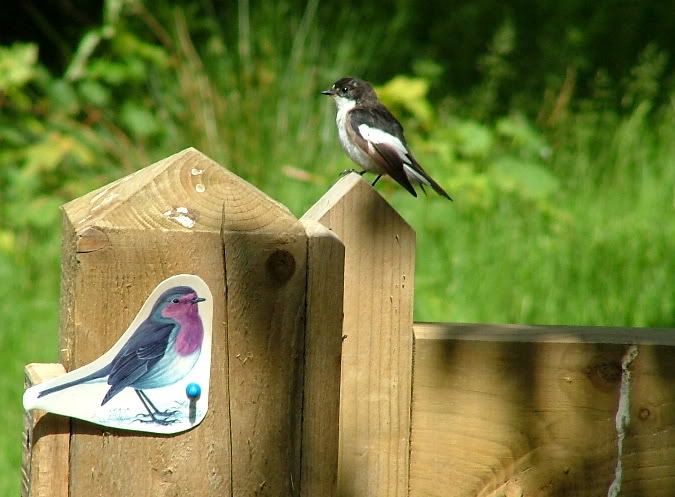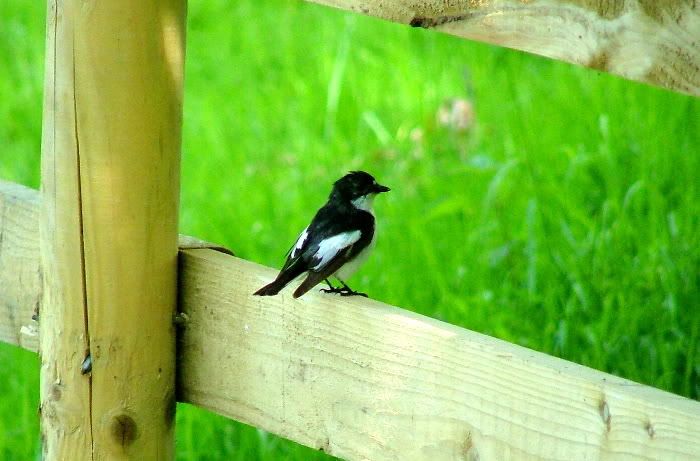
A while since my last post and I wonder where to begin this update. No doubt about it, the honour really does belong to the
immature Black Stork [lifer #212], literally a big lifer, had in North Yorkshire over the weekend. The location was Cawood, a small town along the Ouse with fields sparse and wide enough to satisfy this most wary of birds. The wait to see it pop up out a ditch was around 2 hours and well worth it, although enormous thanks go to the birder who yelled us back. The girlfriend and I had just quit for the day, accepting the dip, and had walked no further than 30 yards when the shout came,
"HEY, IT's THERE!". Never give up hope folks. Anyway a bird like that though shy gets noticed wherever it wanders, the individual possibly first picked up in Ireland, and now has made its way to Spurn. That's a long long way from Hungary - the region the Black Stork really ought to be in. The girlfriend, upon seeing the bird, she simply exclaimed, 'WOW!'.
Peregrine through too on the day also.
In other news, I have lots of shiny new bird kit. We'd actually headed up to N Yorks to check out some
RSPB optics at
Fairburn Ings, and only made it for the Stork when I realised it was just another 10 miles motoring on the day. I was after new binoculars on my RSPB volunteer/discount card, and settled for a pair of
RSPB BGs. £60 more and I could have had the
HGs, but I preferred the cheaper model. They feel a touch lighter and seem just as bright to my eyes. Tried the Viking range too, but for the same price they were dimmer and had a definite blue hue. Weird really, Viking manufacture both its own and the RSPB range, so why the difference?
So bins sorted, it was a scope next. The venerable old Kowa has served us well for 10 years, but using the Swarovskis at
ABB events has spoilt me, they are simply too good to go without. Fortunately those of us not rolling money the
London Camera Exchange have a wide range of fully serviced secondhand optics, and we found an
AT-80 plus 20-60 zoom (and a spare 32x eyepiece). Sure it's a ten year old model but still light years ahead of mid-range scopes from Viking, Kowa, Opticron, etc at the same price. Also, forked out a
Viking S1 tripod which is a sturdy animal and very easy to use.
Tried out the new set-up on my well neglected local patch today,
King's Mill Reservoir, and straight scored a distant
Dunlin (we get maybe three through in a year). I'm sure I would have overlooked the wee wader with the old Kowa, so am I happy with the Swarovski? YES, YES and YES again!
Round-up of for the supporting cast in August goes... family group of
Spotted Flycatcher at Carburton/Wellbeck watchpoint and hundreds of hirundine gathering nearby,
Yellow Wagtail at Hardwick village in Clumber Park,
Red-crested Pochard at Carsington. Nice enough to keep my going in a month I've been at work almost non-stop. Glad it wasn't sunny, that would have been awful!
p.s. Stressed? Tried Birdsong radio
here or
here.
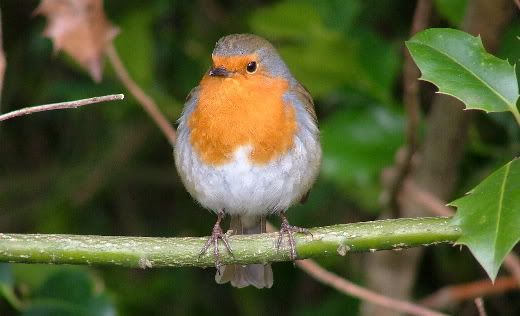
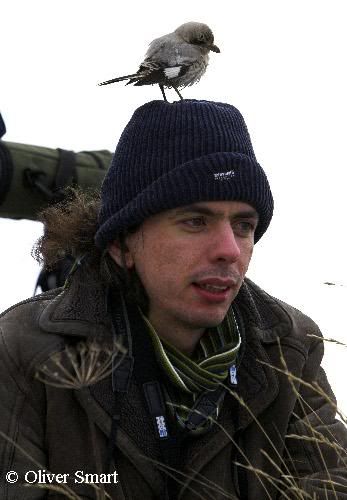

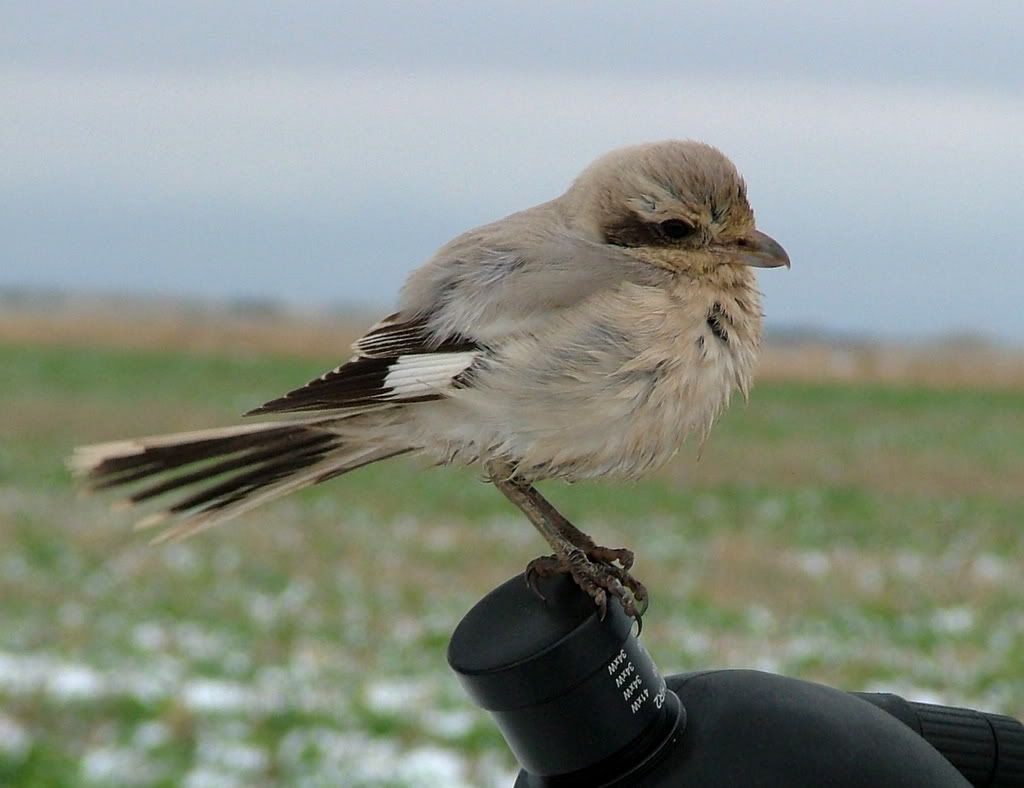


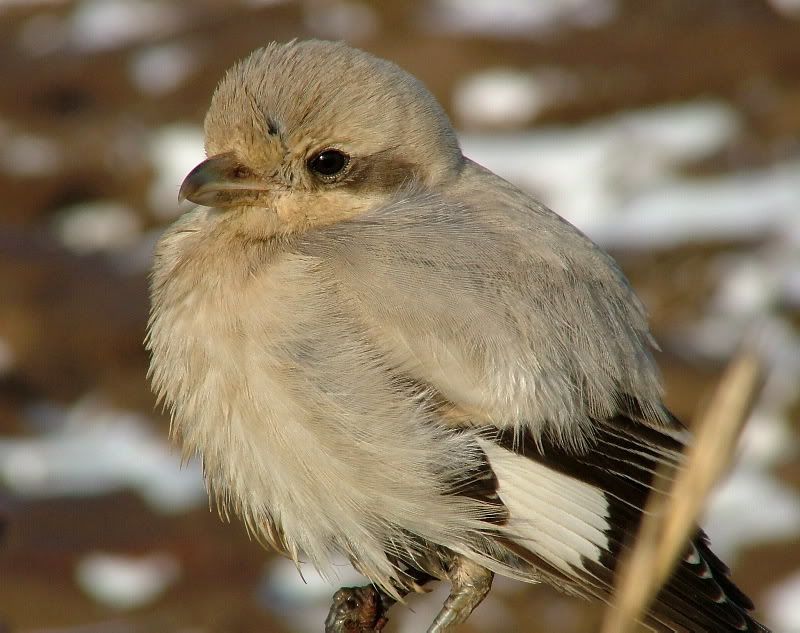
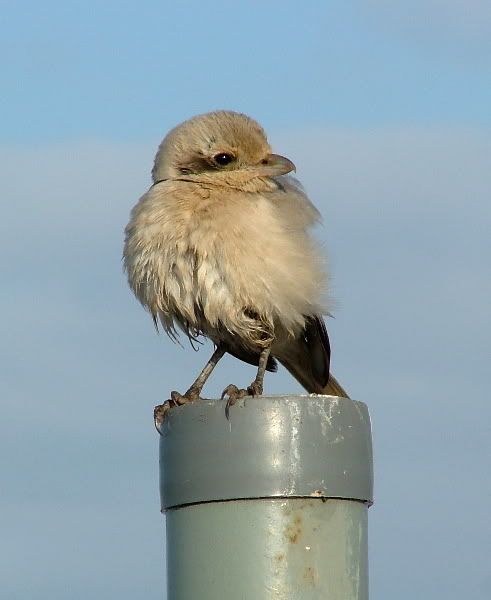


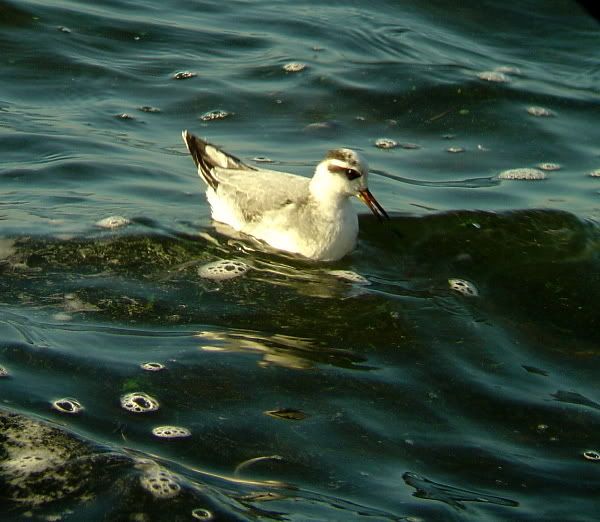
 plus a Barn Owl near miss (phew!) on the way back. Videos to post soon.
plus a Barn Owl near miss (phew!) on the way back. Videos to post soon.
